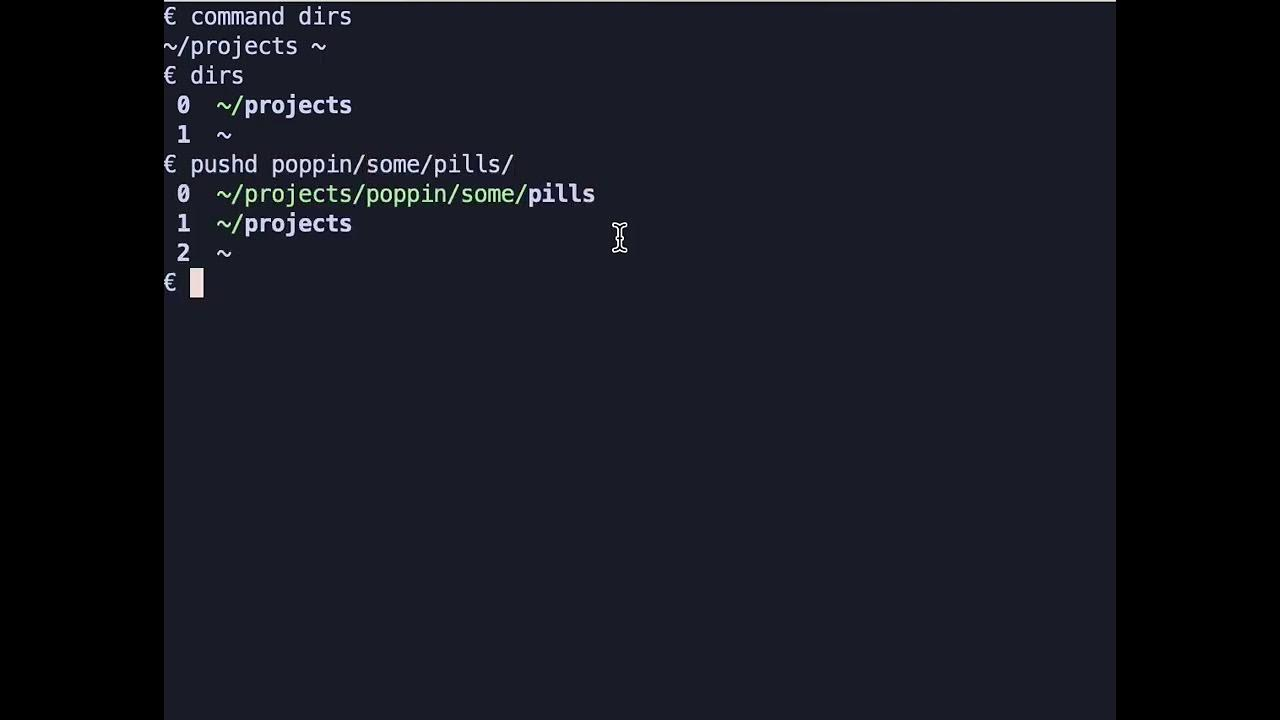# custom dirs
# - default to 'dirs -v' format and colorize the output
function dirs () {
# if no arguments, or single argument is -v or -c, then colorize
if [ $# -eq 0 ] || { [ $# -eq 1 ] && { [ "$1" = "-v" ] || [ "$1" = "-c" ]; }; }; then
# if argument is -c, run it (clear stack)
if [ "$1" = "-c" ]; then
command dirs -c;
fi;
# colorize output
command dirs -v | command awk '
BEGIN {
green = "\033[32m";
bold = "\033[1m";
reset = "\033[0m";
}
{
$1 = bold sprintf("%2d", $1) reset;
$2 = gensub(/(.*\/)([^\/]+)/, green "\\1" reset bold "\\2" reset, "g", $2);
print $1 " " $2;
}'
else
command dirs "$@";
fi;
}
# custom pushd
# - prints dirs if successful
function pushd () {
# run pushd and save stdout and stderr to tmp file
command pushd "$@" > /tmp/pushd_out 2>&1;
# if there was an error, print it and exit
if [ $? -ne 0 ]; then
cat /tmp/pushd_out;
command rm /tmp/pushd_out;
return 1;
fi;
# otherwise, print dirs (with colors)
dirs;
command rm /tmp/pushd_out;
}
# custom popd
# - same thing
function popd () {
command popd "$@" > /tmp/popd_out 2>&1;
if [ $? -ne 0 ]; then
cat /tmp/popd_out;
command rm /tmp/popd_out;
return 1;
fi;
dirs;
command rm /tmp/popd_out;
}
You must log in or register to comment.
I have some scripts to change the color of my terminal for ssh sessions — useful to be able to glance at a terminal and know if it’s local or remote. Bonus points if common hosts have different color schemes.
nice one


